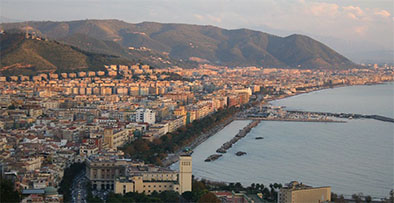Introduzione al perceptions mapping: il caso studio di Salerno, Italia
Abstract
Mappare le percezioni è un processo di sense-making durante il quale le persone mappano i loro beni culturali, naturali e umani; esprimono le loro opinioni, idee, bisogni e aspirazioni ma sollevano anche preoccupazioni ed evidenziano conflitti relativi alla gestione, preservazione, e conservazione del capitale culturale per le future generazioni. La mappatura avviene attraverso i cinque sensi e con l’aiuto di una mappa. Partendo dalle percezioni, la memoria collettiva di ciò che un area rappresentava per la comunità si esplicita. Allo stesso modo, emergono prospettive divergenti e/o convergenti in riferimento a ciò che quet’area rappresenta oggi e, soprattutto, come la comunità vorrebbe che fosse in futuro. La mappatura delle percezioni si è dimostrato uno strumento utile non solo per visulaizzare il patrimonio tangibile, ma anche per ripristinare sulla mappa i beni intangibili. Questo articolo ripercorre il processo di mappatura che è stato effettuato nella città di Salerno in Italia come prima tappa del processo partecipativo Heritage Innovation Partnerships (HIP), lanciato dal progetto H2020 CLIC (Circular models Leveraging Investments in Cultural heritage adaptive reuse).
Downloads

Copyright (c) 2020 Christian Ost, Ruba Saleh

This work is licensed under a Creative Commons Attribution 4.0 International License.
Gli autori che pubblicano su questa rivista accettano le seguenti condizioni:- Gli autori mantengono i diritti sulla loro opera e cedono alla rivista il diritto di prima pubblicazione dell'opera, contemporaneamente licenziata sotto una Licenza Creative Commons - Attribuzione che permette ad altri di condividere l'opera indicando la paternità intellettuale e la prima pubblicazione su questa rivista.
- Gli autori possono aderire ad altri accordi di licenza non esclusiva per la distribuzione della versione dell'opera pubblicata (es. depositarla in un archivio istituzionale o pubblicarla in una monografia), a patto di indicare che la prima pubblicazione è avvenuta su questa rivista.
- Gli autori possono diffondere la loro opera online (es. in repository istituzionali o nel loro sito web) prima e durante il processo di submission, poiché può portare a scambi produttivi e aumentare le citazioni dell'opera pubblicata (Vedi The Effect of Open Access).
